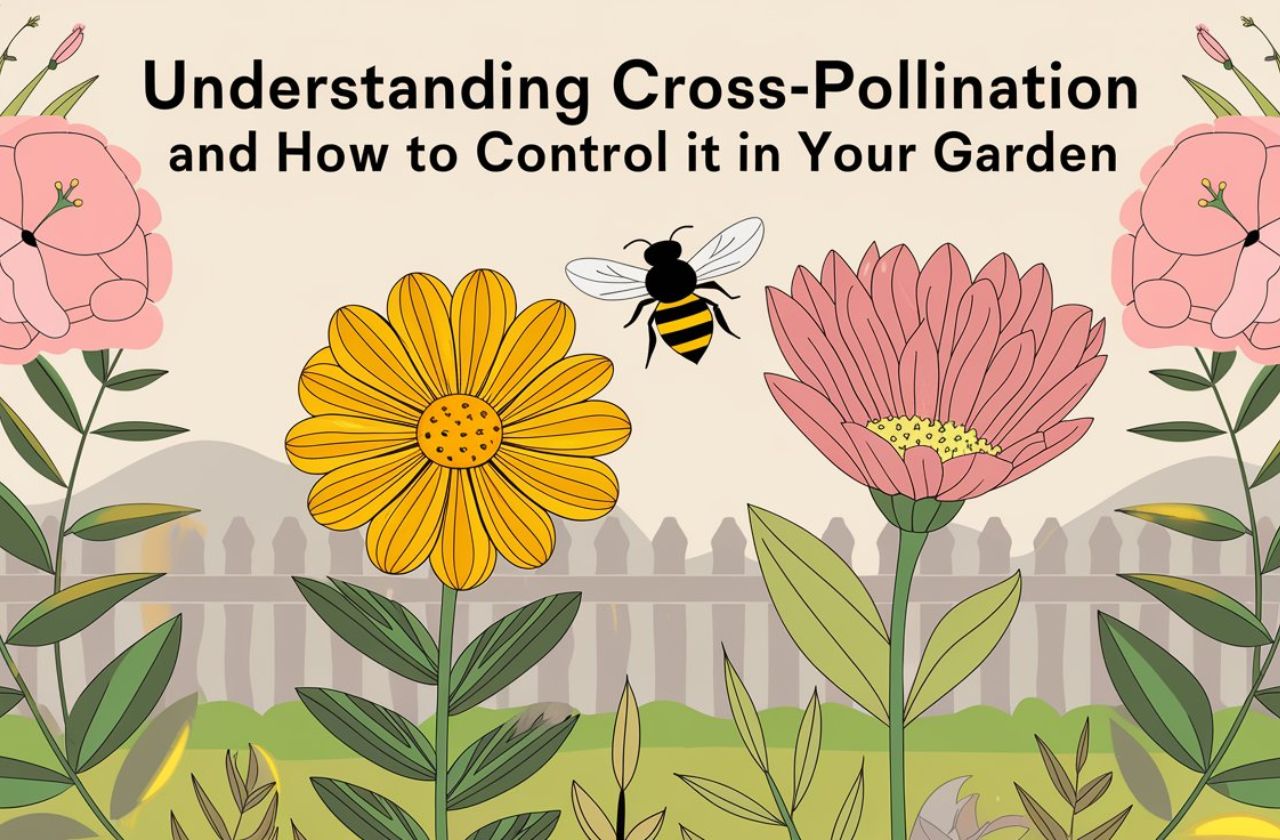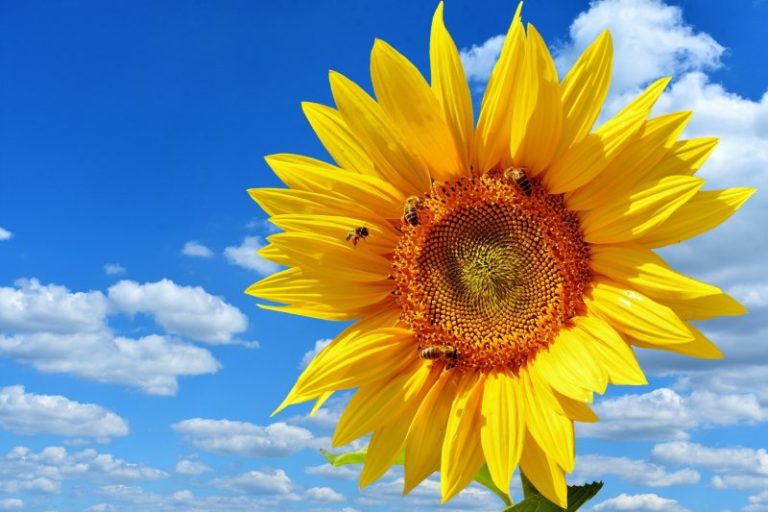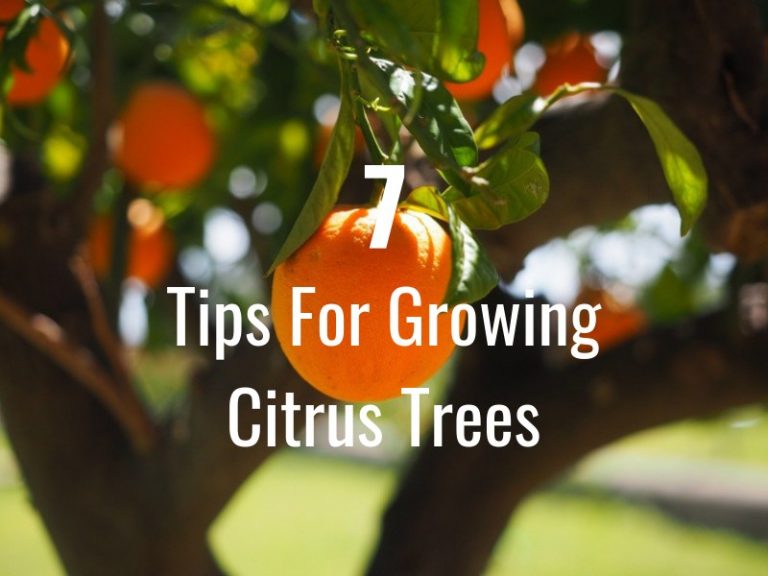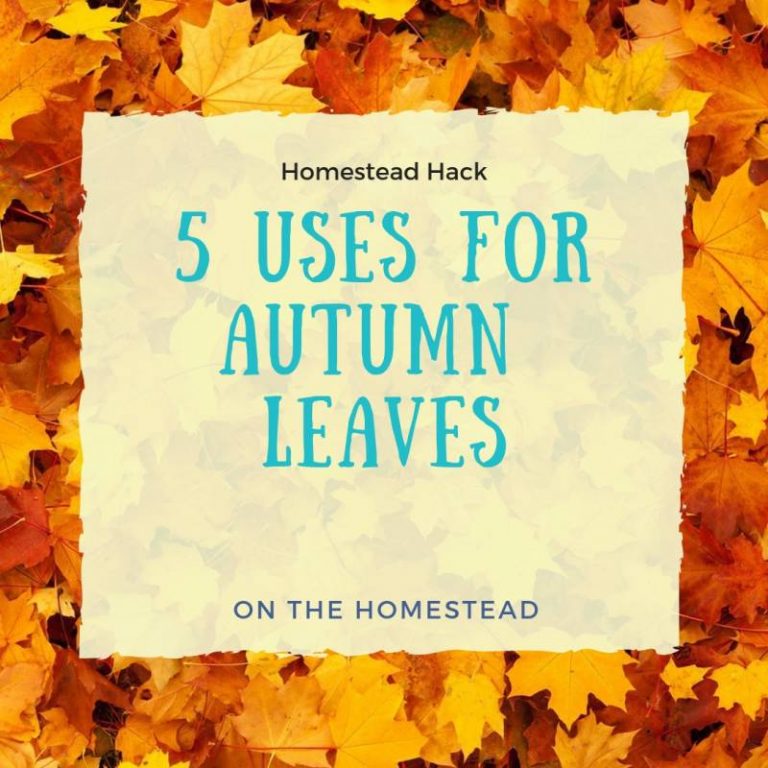Understanding Cross-Pollination and How to Control It in Your Garden
I get commissions for purchases made through links in this post. View our Affiliate Disclaimer.
As you carefully tend to your garden, you may not realize that your plants are having intimate relationships behind your back. Cross-pollination, the transfer of pollen between plants, can be both beneficial and detrimental to your garden’s genetic diversity.
While it can create new and exciting varieties, it can also lead to unwanted hybrids and loss of desirable traits. But fear not – with a little knowledge and planning, you can take control of cross-pollination in your garden and guarantee the integrity of your plants, especially your homegrown vegetables. So, what’s the secret to mastering and managing pollination?
Key Takeaways
- Cross-pollination occurs when pollen is transferred between flowers, allowing for genetic diversity and new plant varieties.
- To prevent cross-pollination, grow only one plant variety, use manual pollination techniques, or space self-pollinated plants far apart.
- Physical barriers like muslin or Reemay can be used to prevent pollinators from transferring pollen between plants.
- Bagging flowers early can prevent cross-pollination, and isolating similar plants can minimize the risk of unwanted cross-pollination.
- Understanding the specific pollination needs of each plant, such as corn, soybeans, apples, and blueberries, can help prevent cross-pollination.
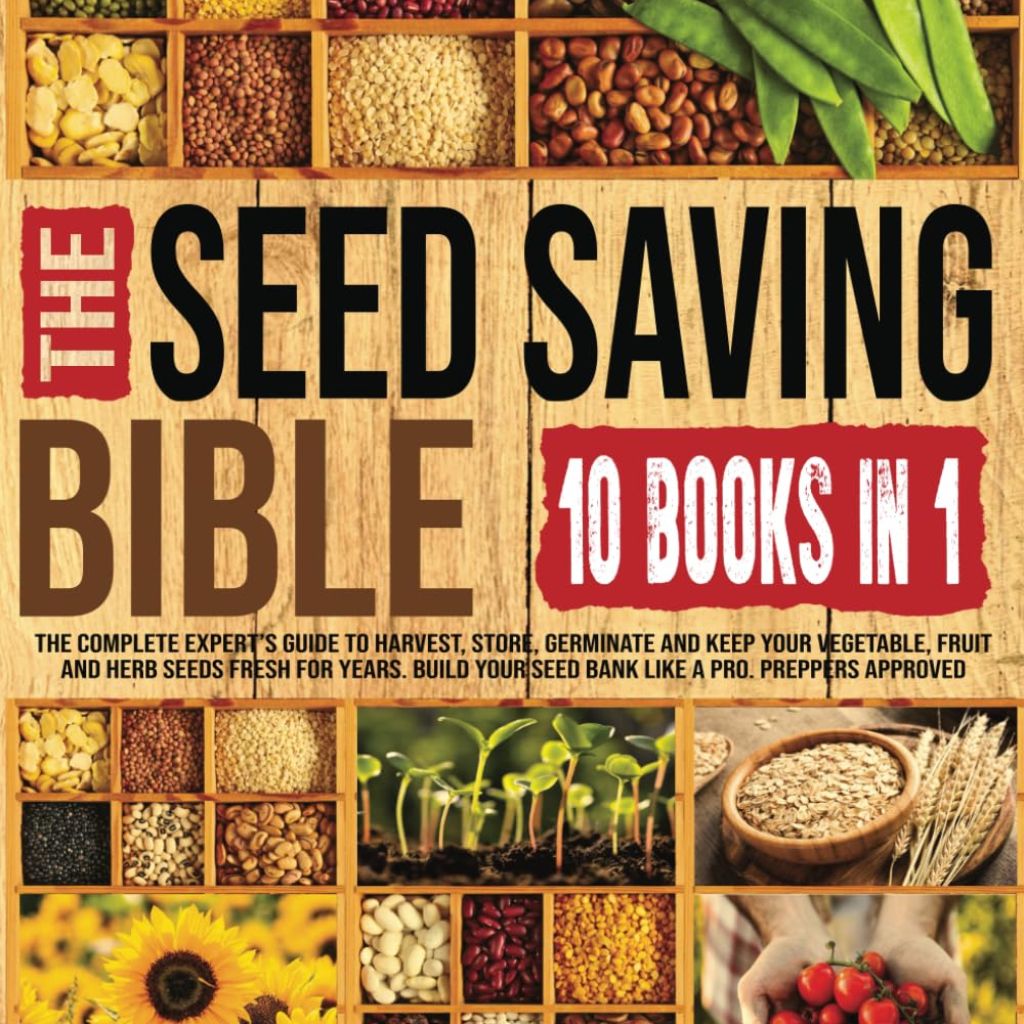
The Seed Saving Bible
The Complete Expert’s Guide To Harvest, Store, Germinate, Keep Your Vegetable And Herb Seeds Fresh For Years

The Seed Garden
The Art and Practice of Seed Saving
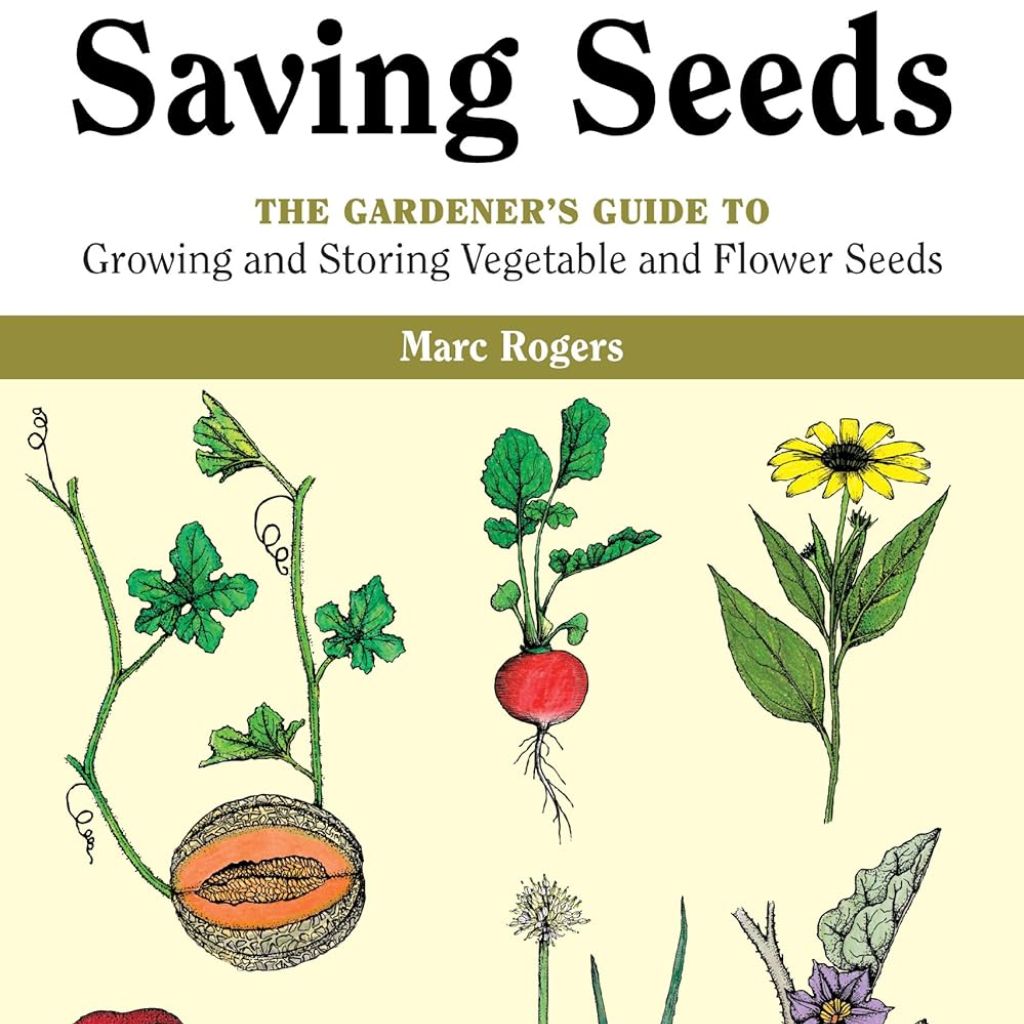
Saving Seeds
The Gardener’s Guide to Growing and Storing Vegetable and Flower Seeds (A Down-to-Earth Gardening Book)
What Is Cross-Pollination?
When you explore the world of gardening, understanding cross-pollination is vital, as it involves the transfer of pollen from one flower to the pistils of another, leading to a genetic combination that can greatly impact the characteristics of your plants.
In simple terms, cross-pollination is the process by which pollen from one plant fertilizes the ovules of another, resulting in the production of seeds. This natural process is important for plant reproduction, as it allows for genetic diversity and the creation of new plant varieties.
You might be wondering how this process works. Well, it’s quite straightforward. When pollen from one flower lands on the stigma of another, it germinates, forming a pollen tube that allows the sperm cells to reach the ovules, resulting in fertilization. This, in turn, leads to the development of seeds, fruits, and eventually, new plants.
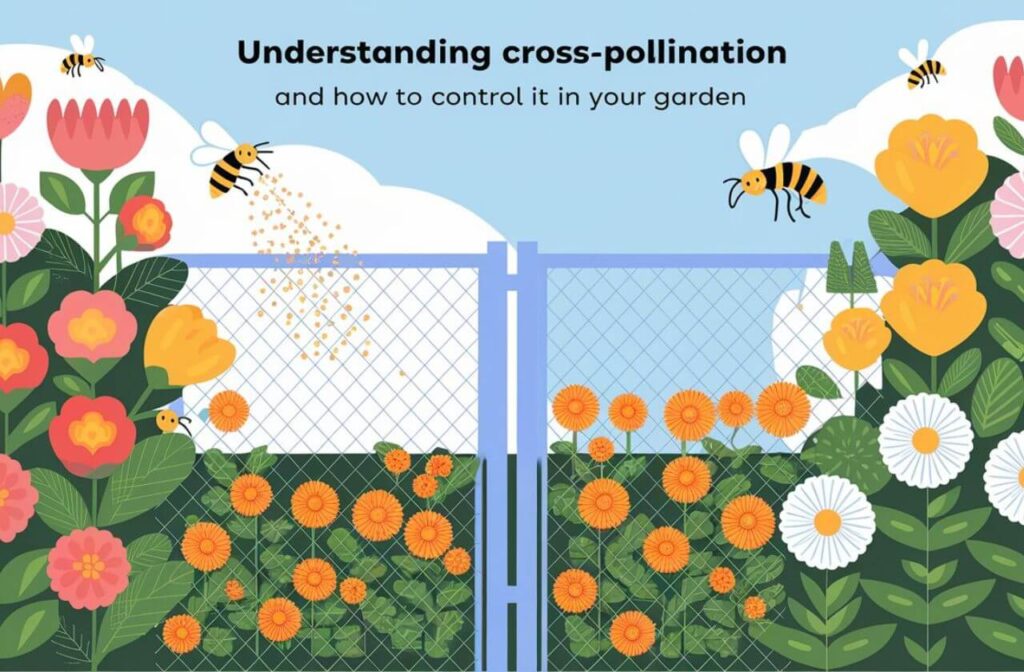
Importance of Genetic Purity
You need to prioritize genetic purity in your garden because it’s the key to preserving the specific characteristics and traits you want in your plants for generations to come. By maintaining genetic purity, you guarantee that the seeds you save or harvest from your plants will produce offspring with the same desirable traits.
This is particularly important for seed savers, breeders, and those working to preserve heirloom varieties. When plants are cross-pollinated, the resulting seeds can produce unpredictable outcomes, often leading to a loss of desired traits. By preventing cross-pollination, you can safeguard the genetic quality of your plants and ensure consistent results.
Techniques like bagging can help control pollination and seed quality, allowing you to maintain the integrity of your plant’s genetic makeup. By taking steps to preserve genetic purity, you’ll be able to enjoy the fruits of your labour for years to come with plants that remain true to their original characteristics.
Self-Pollination Vs Cross-Pollination
In your garden, self-pollinating plants, like beans, peas, and tomatoes, are able to fertilize themselves, whereas cross-pollination requires the transfer of pollen between flowers of different plants. This essential difference is important to understand, especially if you’re looking to prevent cross-pollination in your garden.
Self-pollinating plants have both male and female parts in each bloom, reducing the need for cross-pollination. On the other hand, cross-pollination involves the transfer of pollen between flowers of different plants, leading to genetic diversity.
When it comes to self-pollinating vegetables, their flowers can pollinate themselves, eliminating the need for external assistance. For instance, female flowers in self-pollinating plants have the ability to receive pollen from the same flower or another flower on the same plant. This means you don’t have to worry about preventing cross-pollination in these plants.
However, if you’re looking to prevent cross-pollination in your garden, understanding the difference between self-pollination and cross-pollination is key. By recognizing which plants can self-pollinate, you can take steps to prevent cross-pollination and maintain the genetic purity of your desired plants.
Hybrid Seeds and Their Impact
Hybrid seeds, born from the intentional crossbreeding of two different plant varieties, offer improved characteristics like disease resistance, higher yields, or uniformity. As you consider using hybrid seeds in your garden, it’s important to understand their benefits and limitations.
You may choose hybrid seeds for specific qualities, but it’s vital to know that they don’t produce offspring with consistent traits. This means saved seeds won’t reliably reproduce the desired characteristics, and you’ll need to repurchase seeds each season.
Hybrid seeds result from controlled crossbreeding, where breeders intentionally combine the genetic material of two parent plants to create a new, superior variety. This process allows for the selection of desirable traits, making hybrid seeds appealing to gardeners seeking specific benefits.
However, the lack of consistency in saved seeds means you can’t rely on them to produce consistent results. By understanding the differences between hybrid and open-pollinated seeds, you can make informed decisions about your garden plantings and choose the right seeds for your needs.
Controlling Cross-Pollination Methods
To prevent unwanted cross-pollination, it’s important to implement specific techniques that minimize the chance of genetic mixing between different plant varieties in your garden.
One effective method is to grow only one variety of a species in your garden, reducing the chances of cross-pollination. It’s vital to determine if a plant is self-pollinating or wind/insect pollinated, as this will influence your approach.
Self-pollinating vegetables like beans, peas, lettuce, peppers, tomatoes, and eggplant can be grown separately to reduce the risk of cross-pollination. Planting different varieties of self-pollinated plants far apart can also minimize the risk.
Additionally, you can use manual pollination techniques to control cross-pollination. By understanding the pollination process and implementing these methods, you can safeguard the genetic integrity of your plants.
Bagging Technique for Prevention
Now that you’ve decided to use the bagging technique to prevent cross-pollination, it’s crucial to focus on two critical aspects: selecting the right bag material and timing the cover correctly.
You’ll want to choose a breathable material that allows for airflow and won’t retain moisture, which can lead to rot and other issues.
Bag Material Selection
Selecting the right material for bagging is essential, as it directly affects the success of your cross-pollination prevention efforts. When it comes to the bagging process, you’ll want to choose materials that allow for airflow and won’t damage your plants. Opt for breathable materials like muslin or Reemay, which will provide the necessary protection without harming your flowers.
Avoid using plastic bags, as they can cause damage to your plants and hinder the bagging process. Instead, gently secure the bags around the stem using cotton balls or twist-ties to protect the flowers. Be sure to label and identify the bagged flowers to keep track of the pollinated varieties effectively.
Timing the Cover
You’ll want to time your bagging precisely, as the blossoms start to appear, to guarantee the most effective protection against cross-pollination. This guarantees that your seeds remain pure and unaffected by external factors.
To achieve this, you’ll need to cover the female flower before it’s pollinated. Here’s a breakdown of the bagging process:
| Step | Description |
|---|---|
| 1 | Cover the flower with a breathable material (e.g., muslin or Reemay) as soon as it appears. |
| 2 | Secure the bag around the stem without causing harm to the plant. |
| 3 | Wait for fruit formation, then remove the bag and collect the seeds for future planting. |
Preventing Cross-Pollination Naturally
Now that you’ve learned about the bagging technique, it’s time to explore ways to prevent cross-pollination naturally.
You can use barrier methods, such as planting hedges or using raised beds, to separate wind-pollinated species and prevent unwanted cross-pollination.
Barrier Methods Work
By using barrier methods, you can naturally prevent cross-pollination in your vegetable plants, maintaining genetic purity and desired traits. This approach is particularly helpful when you want to save vegetable seeds from your harvest for next year’s planting.
Barrier methods like bagging flowers are a valuable way to uphold genetic purity by blocking pollen transfer between different plant varieties. To utilize this technique, cover blossoms with materials like muslin or Reemay, creating a physical barrier against pollinators.
Bagging your flowers early, as soon as they appear, is crucial for successfully preventing cross-pollination. When bagging, use gentle ties or cotton balls to secure the bags around stems, avoiding any harm to your plants.
Isolate Similar Plants
To prevent unwanted cross-pollination, separate similar plants in your garden by a considerable distance, ensuring that each variety maintains its unique characteristics and produces true-to-type seeds. This natural method of isolation serves to keep your plants’ genetic purity intact, allowing them to thrive without unwanted hybridization.
By spacing out similar plants, you’re providing them with the room they need to grow and develop independently, free from the influence of neighboring plants.
As you plan your garden, remember that plants need space to breathe and grow. Different varieties of the same plant should be grown far enough apart to prevent cross-pollination. This is essential for preserving the unique traits and characteristics of each variety.
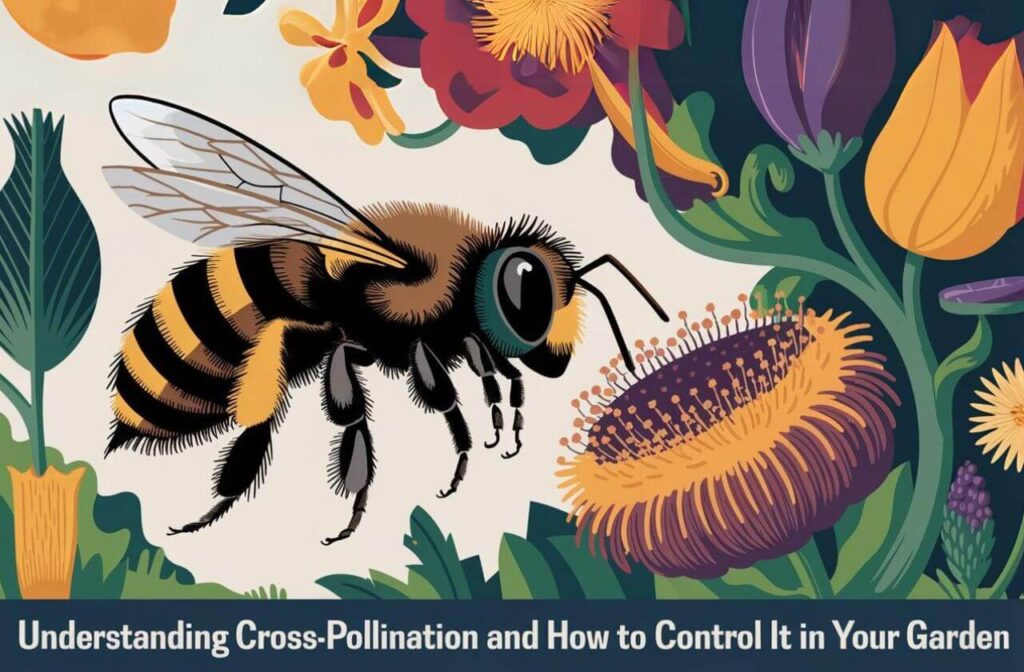
Managing Pollinators in the Garden
As you cultivate a thriving garden, managing pollinators like bees becomes essential to facilitate cross-pollination and ultimately enhance fruit set and quality. Bees are the primary pollinators in gardens, and their role in cross-pollination is vital for best plant growth.
To guarantee successful cross-pollination, you need to create a pollinator-friendly environment by planting a diverse range of flowers that attract beneficial pollinators. Monitoring pollinator activity and maintaining a healthy population can greatly improve cross-pollination rates in your garden.
By understanding the role of pollinators, you can take steps to manage them effectively, resulting in better fruit set and quality.
By creating a welcoming environment for pollinators, you’re more likely to attract the right kind of visitors to your garden. This, in turn, will facilitate cross-pollination, leading to healthier and more productive plants.
Cross-Pollination in Specific Crops
Exploring the world of cross-pollination is essential for understanding how it affects specific crops, such as corn and soybeans, as well as fruits and vegetables.
You’ll discover that certain plants, like blueberries, squash, and sweet corn, have unique cross-pollination needs that can significantly impact your garden’s success.
Corn and Soybeans
You’ll need to take specific precautions when growing corn and soybeans to prevent cross-pollination and guarantee the integrity of your seed production.
Corn, being wind-pollinated, can cross-pollinate with other corn varieties within a distance of up to 1.5 miles. To minimize this risk, plant different corn varieties at least 250 feet apart. This will help make sure that your corn seeds remain pure and uncontaminated.
On the other hand, soybeans are self-pollinating plants, which reduces the risk of cross-pollination in the field. However, maintaining isolation distances between different soybean varieties can further reduce cross-pollination.
Understanding the pollination methods of specific crops like corn and soybeans is important for successful seed production. By taking these precautions, you can secure the quality and purity of your seeds, giving you greater control over your garden’s biodiversity.
With a little planning and attention to detail, you can enjoy a thriving and diverse garden, free from the risks of cross-pollination.
Fruit and Vegetable
When growing fruit and vegetables, understanding the unique cross-pollination needs of each crop is vital for optimizing yields and maintaining seed purity. You’ll want to take into account the specific requirements of each fruit tree or shrub in your garden to make sure you’re getting the most out of your harvest.
For instance, apples need two different varieties for cross-pollination to enhance fruit yield and quality. On the other hand, squash plants like zucchini and butternut can cross-pollinate, resulting in hybrid seeds with combined characteristics. To prevent unwanted cross-pollination, you can bag insect-pollinated plants like cucumbers and watermelon.
Blueberries, meanwhile, require two compatible varieties with overlapping bloom times for effective cross-pollination. By understanding the cross-pollination needs of specific fruits like pears and cherries, you can optimize fruit production in your garden. Take the time to research the unique needs of each crop, and you’ll be on your way to a bountiful harvest.
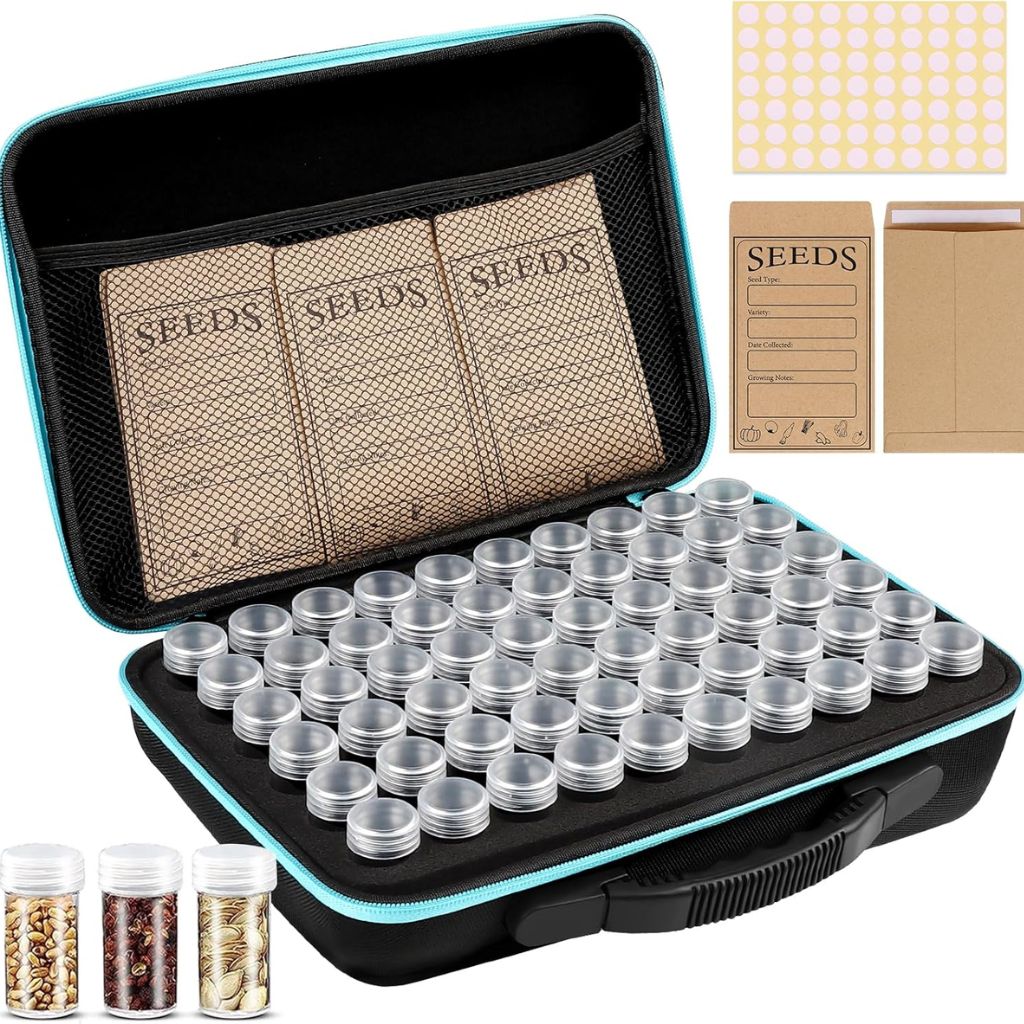
Jixsloft Seed Storage
60 Slots Seed Storage Organizer with 20 Seed Envelopes, Sturdy Seed Organizer Storage Box with Zipper Bag, Label Stickers

Xbopetda Seed Saving Box
Metal Seed Bin, Seed Storage Organizer Box, Seed Packet Container with Lid, Seed Envelope Storage Box, 4 Compartments
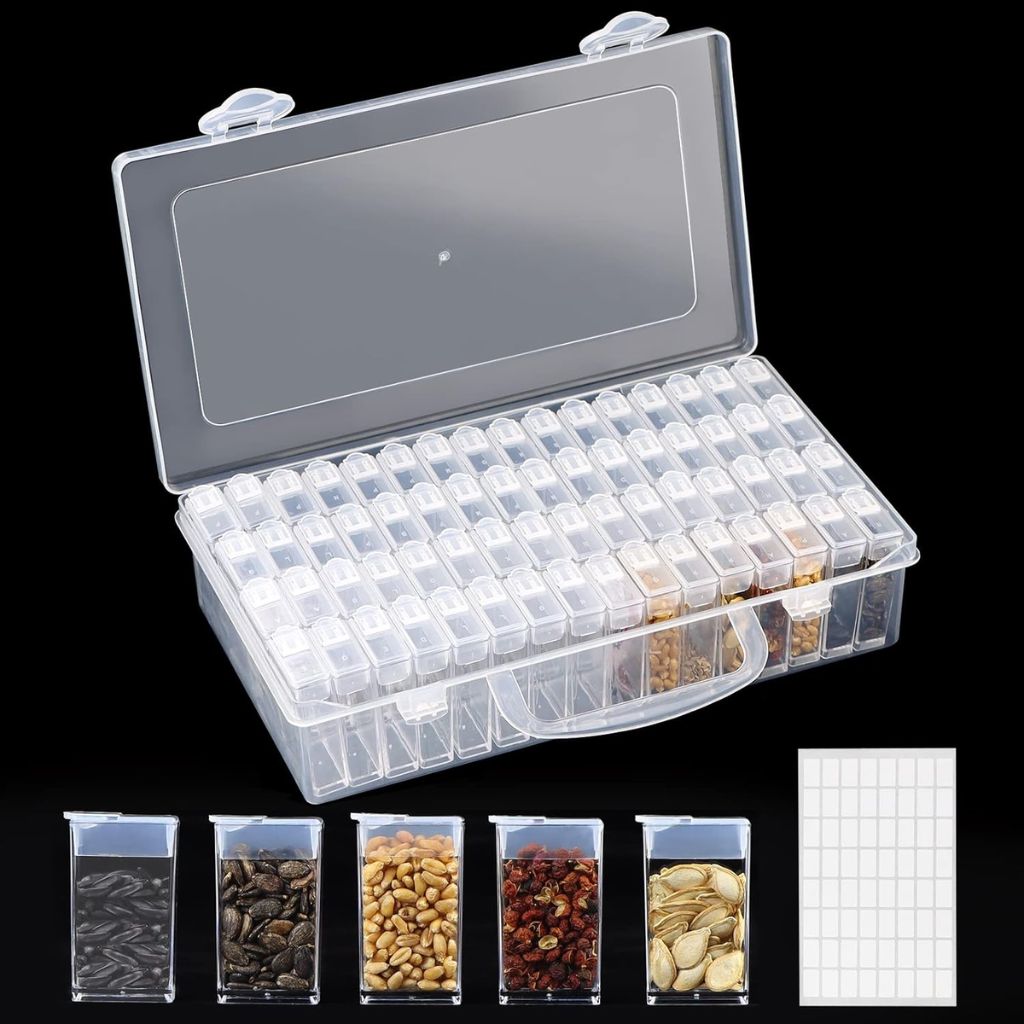
64 Slots Plastic Seed Storage Box
Organizer with Label Stickers(seeds not included), Seed Container Storage use for Flower Seeds,Vegetable Seeds
Safeguarding Seed Integrity
By utilizing the bagging technique, you can effectively safeguard the genetic integrity of your vegetable plants, guaranteeing the production of pure seeds that preserve the unique characteristics of each variety. This method is particularly useful for insect-pollinated plants like broccoli, cucumbers, watermelon, and pumpkins, which are prone to cross-pollination.
By bagging the female flowers, you can prevent unwanted pollen from different varieties from contaminating your plants. This secures that the seeds produced are true to type, maintaining the specific characteristics of each variety. Bagging is a simple yet effective method to control pollination and seed purity in a variety of vegetable species.
Frequently Asked Questions
How to Avoid Cross-Pollination in a Garden?
To avoid cross-pollination in your garden, you’ll want to set up garden barriers, like row covers or copper tape, and deploy pollen traps to capture stray pollen, ensuring your crops stay true to their variety.
How Far Away to Plant to Avoid Cross-Pollination?
You must consider pollinator movement when planting, as bees and butterflies can travel far. Follow distance guidelines: 100 feet for wind-pollinated plants, 250 feet for corn, and more for squash to avoid unwanted cross-pollination.
How to Keep Flowers From Cross-Pollinating?
You can keep flowers from cross-pollinating by isolating them from pollinators, altering their behavior by blocking access to flowers or using row covers to prevent unwanted pollen transfer, ensuring genetic purity in your harvest.
How Far Apart Should I Plant Tomatoes to Prevent Cross-Pollination?
‘To guarantee purity, you’ll want to space your tomato varieties at least 10-50 feet apart, depending on wind and bee activity, to prevent cross-pollination and maintain your plant’s unique characteristics.’
Conclusion
By understanding cross-pollination and its effects, you can take control of your garden’s genetic diversity. Implementing methods like physical barriers, isolation, and pollinator management can help guarantee unwanted cross-pollination.
By staying informed about specific crop needs and taking proactive steps, you can safeguard the integrity of your seeds and maintain consistent traits over time. With the right knowledge and strategies, you can overcome the challenges of cross-pollination and cultivate a thriving, diverse garden.
Get more posts like this
Subscribe to our mailing list and get interesting homesteading and green living info and updates to your email inbox.
Thank you for subscribing.
Something went wrong.

